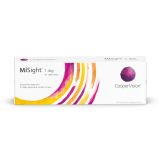Optikai Magazin - cikk - Új kontaktlencse-innováció az asztigmiás, presbyop páciensek igényeinek kielégítésére
CV/2020/73 Lezárás dátuma: 2020. Augusztus 14.
REFERENCES
- Luensmann D, Schaeffer JL, Rumney NJ, et al. Spectacle prescriptions review to determine prevalence of ametropia and coverage of frequent replacement soft toric contact lenses. Cont Lens Anterior Eye 2018;41:412-20.
- Industry fit data, January 2017- December 2017. Italy, UK and Germany. 41% of toric CL wearers age 41 years or over..
- Sulley A, Young G, Hunt C. Factors in the success of new contact lens wearers. Contact lens & anterior eye 2017;40:15-24.
- Sulley A, Young G, Hunt C, et al. Retention Rates in New Contact Lens Wearers. Eye & contact lens 2018;44 Suppl 1:S273-S82.
- Dumbleton K, Woods CA, Jones LW, et al. The impact of contemporary contact lenses on contact lens discontinuation. Eye & contact lens 2013;39:93-9.
- Young G. Why one million contact lens wearers dropped out. Contact lens & anterior eye 2004;27:83-5.
- Young G, Veys J, Pritchard N, et al. A multi-centre study of lapsed contact lens wearers. Ophthalmic & physiological optics : the journal of the British College of Ophthalmic Opticians 2002;22:516-27.
- Patel S, Boyd KE, Burns J. Age, stability of the precorneal tear film and the refractive index of tears. Contact lens & anterior eye 2000;23:44-7.
- du Toit R, Situ P, Simpson T, et al. The effects of six months of contact lens wear on the tear film, ocular surfaces, and symptoms of presbyopes. Optometry and vision science 2001;78:455-62.
- CVI data on file 2019. Based on total number of prescription option combinations manufactured (for sphere, cylinder, axis, and add—including D & N combinations).





